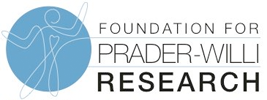Funding Summary
Dr. Doege’s group will use novel, cutting-edge technology to examine how the PWS-region genes are expressed in the human brain, focusing on the regions that are critical for controlling feeding related behaviors. This approach will provide a high resolution understanding of where the PWS critical genes are normally expressed in the brain.
Dr. Theresa Strong, Director of Research Programs, shares details on this project in this short video clip.
Lay Abstract
Summary: Five paternal microdeletion PWS patients have been identified. The overlaps among these patients’ paternal deletion regions identifies a 91-kb critical deletion region sufficient to cause the major physical and neuroendocrine phenotypes of PWS. The SNORDs within the microdeletion region – SNORD116s and SNORD109A – are predominantly expressed in the brain. While the PWS locus is highly conserved between mice and humans, there are also significant differences. SNORD109 is present in humans, but not in mice. Additionally, not all SNORD116s are conserved between species. In particular, SNORD116 group III is more primate-specific. These differences in genomic organization of the locus motivate the investigation of a potential role in human-specific aspects of PWS pathology. While microdeletions in humans are strongly associated with hyperphagia and obesity, SNORD116 knockout mice do not become obese. Additional genetic or epigenetic factors, possibly including SNORD109 (absent in mice) and/or the more primate-specific SNORD116 group III, may contribute to the metabolic dysregulation observed in human PWS patients. Understanding these species-specific differences is critical for interpreting results from animal models and their relevance to human disease.
Significance: Here, we focus on the SNORDs of the minimal critical PWS region in human brain regions of relevance to PWS including the hypothalamus and also cerebellar regions which have emerged recently as of functional interest in PWS. We hypothesize that specific cell types have distinct expression patterns of the SNORDs and anticipate an enrichment of SNORD109 and SNORD116 group III in cell types with predominant role in the regulation of appetite and satiety.
Innovation: We propose to utilize the novel, highly specific and sensitive spatial transcriptomics Xenium In Situ technology (10x Genomics) to assess the expression patterns of the genetic elements of the minimal critical PWS region at single-cell resolution in sections from human post-mortem hypothalamus and cerebellum from neurotypical donors. The custom panel design of 480 genes will include probes for the SNORDs of the minimal critical PWS region, cell-type specific marker, neuropeptides, receptors involved in the regulation of appetite and satiety, transcription factors and genes of interest to the PWS research community.
Expected Impact and Next Steps: We anticipate to identify the distinct expression pattern of the genetic elements of the minimal critical PWS region for specific cell types across feeding-related brain regions in the hypothalamus and cerebellum. We will define the expression patterns for adult neurotypical donors and thus provide a framework for future studies in subjects with PWS and also extension of this study to prenatal and ages 0-40 years human postmortem brains. Our studies are expected to inform future functional studies in human stem cell-derived cell types that will define the distinct roles of the specific genetic elements in the minimal critical region of the PWS locus in humans.
Funded Year:
2025
Awarded to:
Claudia Doege, Ph.D.
Amount:
$162,000
Institution:
Columbia University Medical Center
Researcher:

Claudia Doege, PhD




